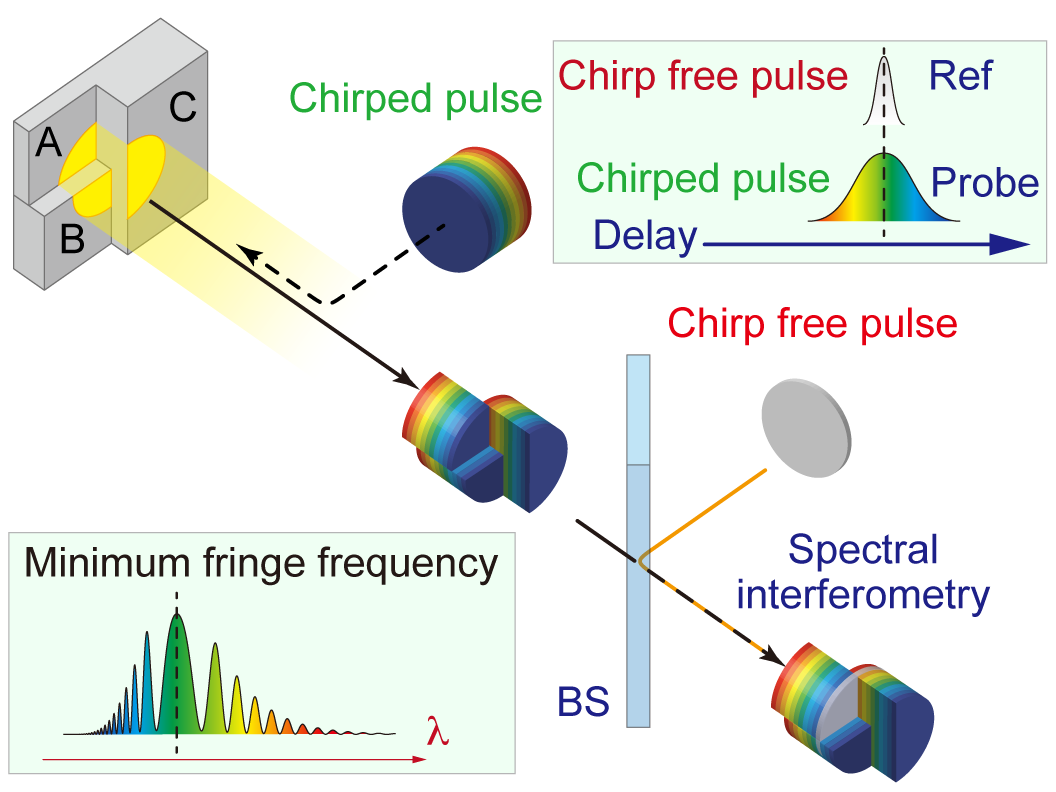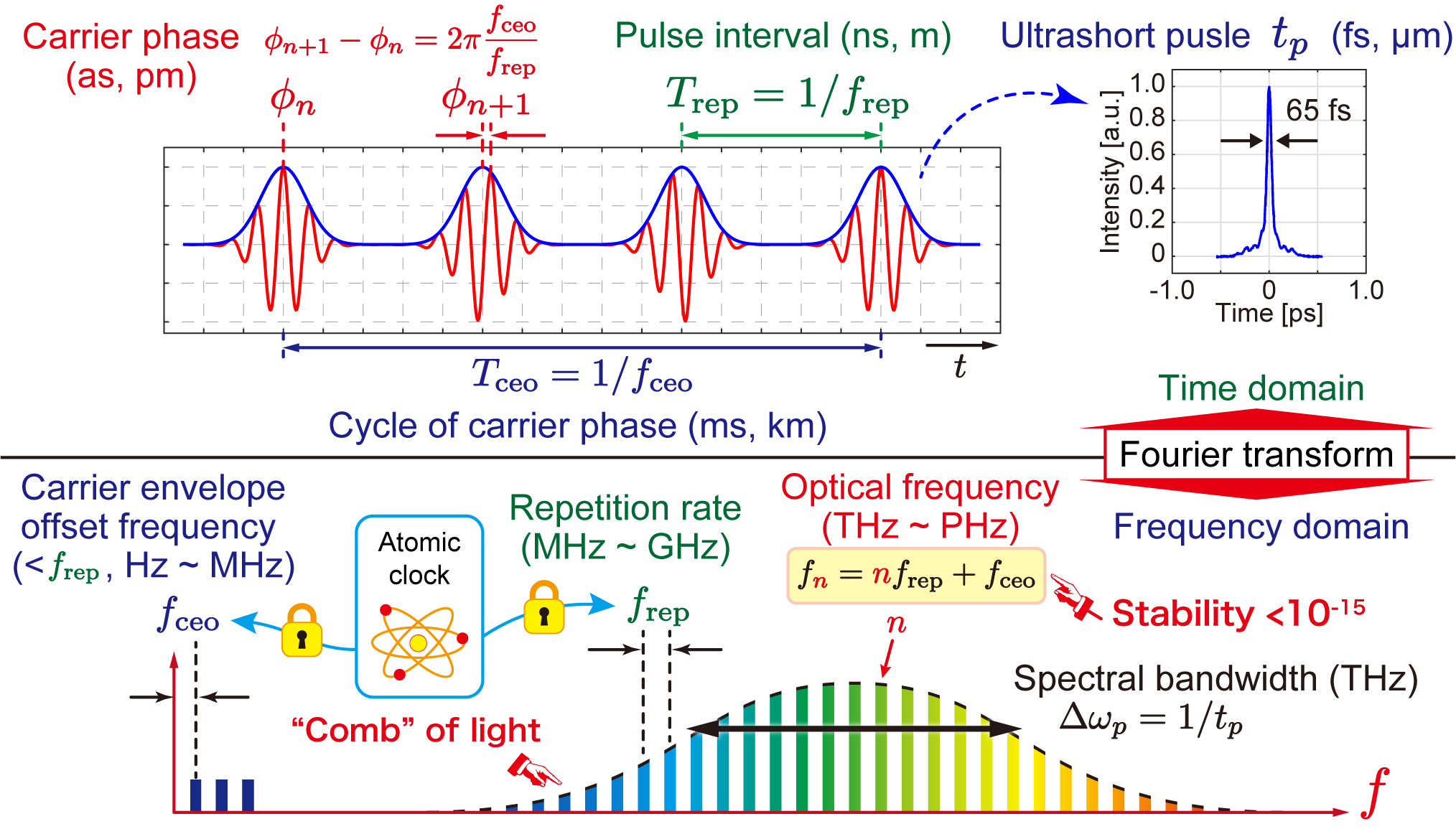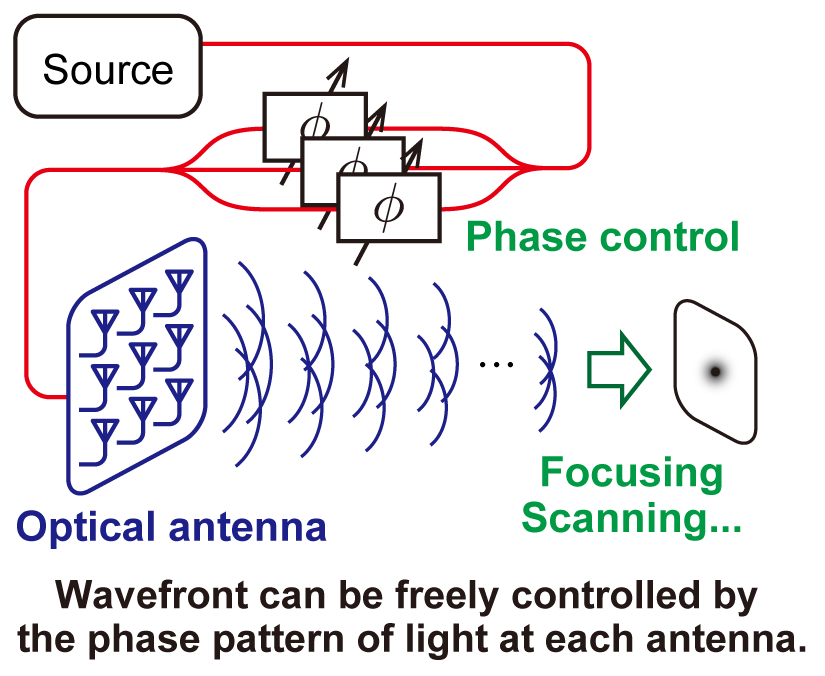
Measurement of length and distance, which are fundamental physical quantities, is the foundation of academia and industry, and its application to 3D shapes has been demanded in recent years. However, in order to meet the specifications required by the rapidly growing industrial technology in recent years and to clarify various phenomena in the science and technology, a measurement method with both high speed, high accuracy, and wide range is required.
To meet these requirements, we developed the world's first one-shot 3D imaging measurement method using chirped ultrashort pulses[1], but further technological innovation was required to break through the high dynamic range measurement exceeding six orders of magnitude. Recently, to overcome this challenge, we have developed an one-shot 3D imaging measurement method based on spectral interference of chirped ultrashort pulse trains using an optical frequency comb with a fiber laser that is both practical and high quality [2-5]. This method using an optical frequency comb is a new one-shot 3D imaging measurement technique that simultaneously achieves high speed, high accuracy, and high dynamic range, which were difficult to achieve with conventional techniques.
This method uses spectral interference between chirp-free and chirped pulses generated by the optical frequency comb to convert distance information into time and wavelength information at ultrahigh speed to measure 3D shapes without scanning. The figure shows the measurement principle. When a chirped pulse is irradiated to an object to be measured, the reflected pulse is given a time delay according to the 3D shape of the object. In order to acquire this pulse without scanning, the reflected pulse is interfered with chirp-free pulse to generate a chirped spectral interference pattern that varies along the wavelength axis depending on the delay time. The wavelength that gives the minimum fringe frequency reflects the central wavelength of the chirped pulse at the timing when the two pulses overlap. Since this wavelength gives distance information, shape information can be obtained by spatially measuring the optical spectrum with an imaging spectrometer or the like. Recently, this wavelength distribution has been captured instantaneously using novel 2D spectroscopy with optical processing and we realized high-resolution one-shot 3D imaging measurement with spatial resolution equal to that of an imaging device [6].
[1] K. Minoshima, H. Matsumoto, Z. G. Zhang, and T. Yagi, JJAP 33, L1348-L1351 (1994).
[2] T. Kato, M. Uchida, and K. Minoshima, Sci. Rep., 7(1), 3670 (2017).
[3] T. Kato, M. Uchida, Y. Tanaka, and K. Minoshima, OSA Continuum 3(1), 20-30 (2020).
[4] T. Kato, M. Uchida, Y. Tanaka, and K. Minoshima, Optics Express 29(26), 43778-43792 (2021).
[5] S. Kurata, H. Ishii, K. Terada, T. Morito, H. Tian, T. Kato, and K. Minoshima, Optics Continuum 1(11), 2374 (2022).
[6] T. Kato, H. Ishii, K. Terada, T. Morito, and K. Minoshima: arXiv (2020) arXiv:2006.07801.



